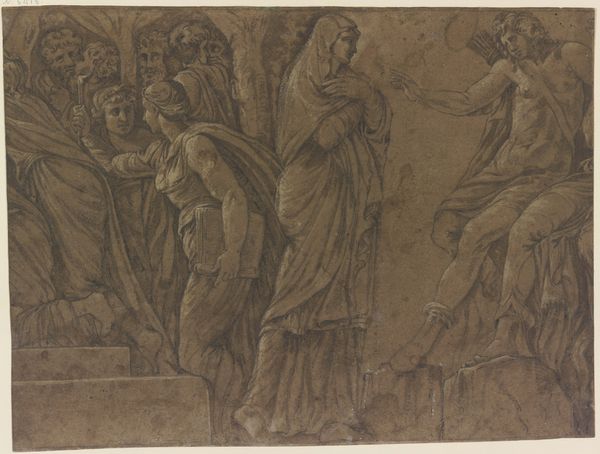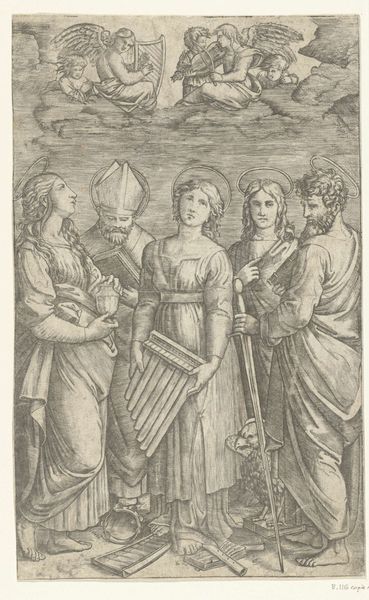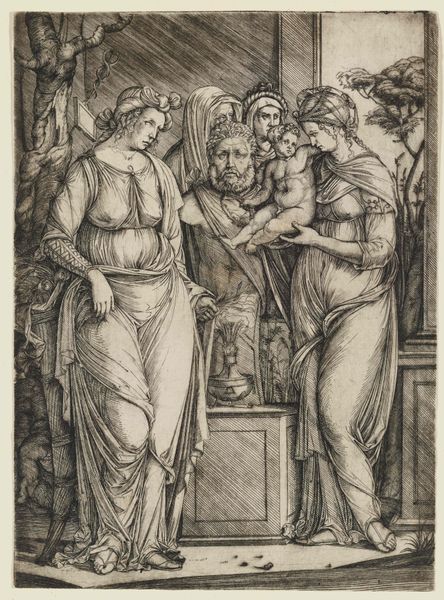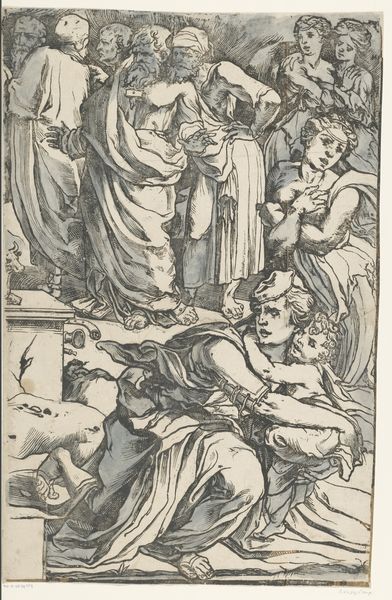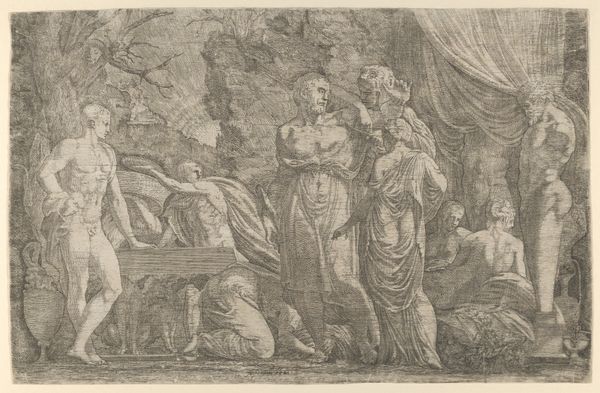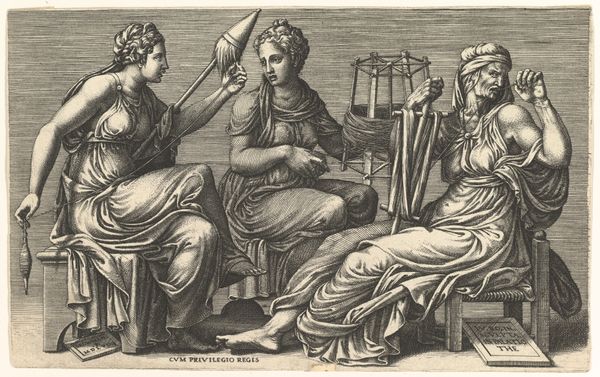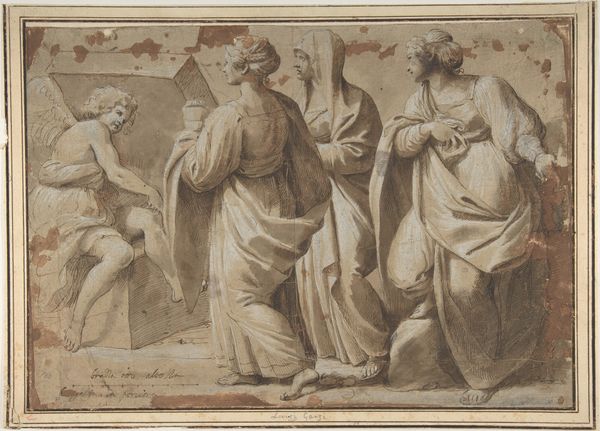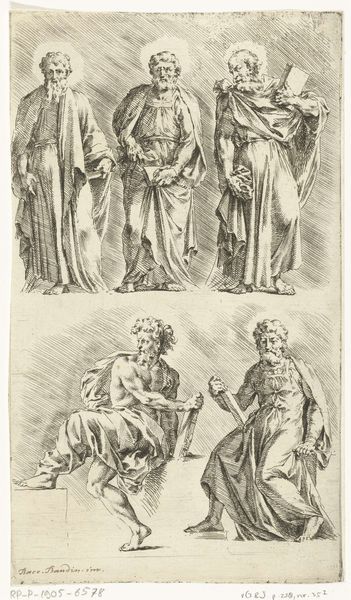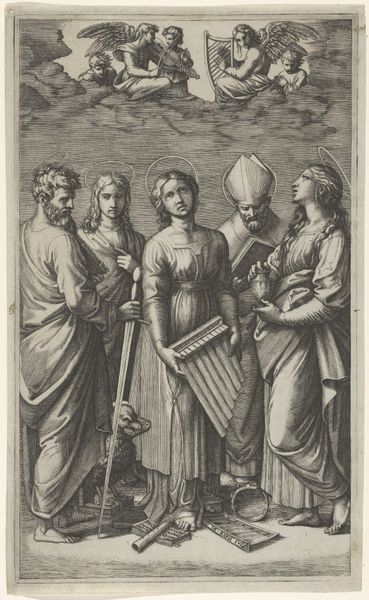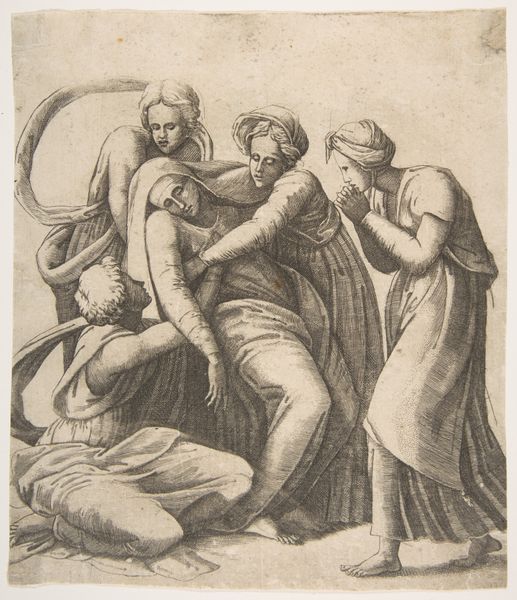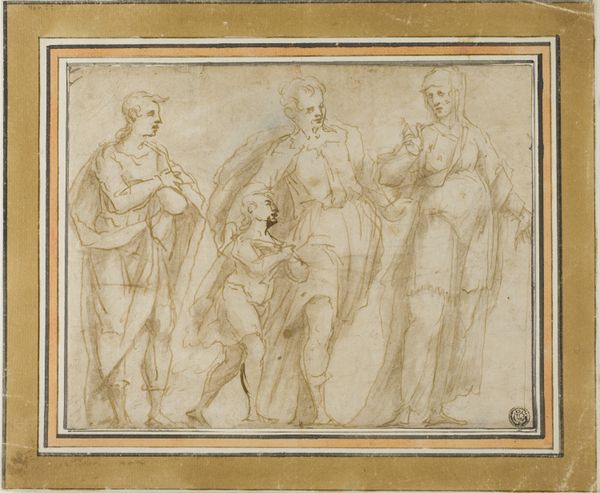
Saint Barbara (left), Saint Catherine, (center), Saint Lucy (right) 1495 - 1532
0:00
0:00
drawing, print, engraving
#
portrait
#
drawing
# print
#
figuration
#
italian-renaissance
#
engraving
Dimensions: 3 1/16 x 4 5/8 in. (7.7 x 11.8 cm)
Copyright: Public Domain
Editor: This engraving by Marcantonio Raimondi, "Saint Barbara, Saint Catherine, and Saint Lucy," from the early 16th century presents three standing female figures, each bearing an attribute. I'm curious about how these individual saints became such an enduring group in the popular imagination. What makes this combination so significant, particularly from a historical standpoint? Curator: Good question. Raimondi's choice of these three saints likely reflects a particular cultural devotion that was prominent during the late Medieval and early Renaissance periods. Saint Barbara, Catherine, and Lucy were often invoked for protection against sudden death, illnesses, and various afflictions. Editor: Ah, so a kind of holy insurance policy? I also wonder, what about the socio-political implications? Did representing them together serve another purpose beyond religious devotion? Curator: Precisely. The combined representation served as a potent symbol of civic and personal piety. Their individual stories of resilience and resistance against oppressive forces –Barbara's defiance of her father, Catherine's intellectual battle against pagan philosophers, and Lucy's unwavering faith despite persecution – resonated with a society navigating its own power struggles and societal anxieties. Raimondi, by visually uniting them, is amplifying this message and making it widely accessible. Editor: Fascinating! It makes me see the engraving as more than just a depiction of saints. So, in this image, Raimondi isn’t merely illustrating religious figures, he's also subtly engaging with ideas of civic duty and social fortitude. Curator: Exactly. Moreover, engravings like this facilitated the dissemination of such powerful imagery to a wider audience, embedding these ideals into the social consciousness. The print becomes an agent for social and political ideas. Editor: Thinking about the intersection of art and societal values like that adds so much to the experience of simply viewing the artwork. Thank you! Curator: My pleasure. Reflecting on the historical context allows us to see artworks not as isolated creations, but as active participants in their cultural landscape.
Comments
No comments
Be the first to comment and join the conversation on the ultimate creative platform.
